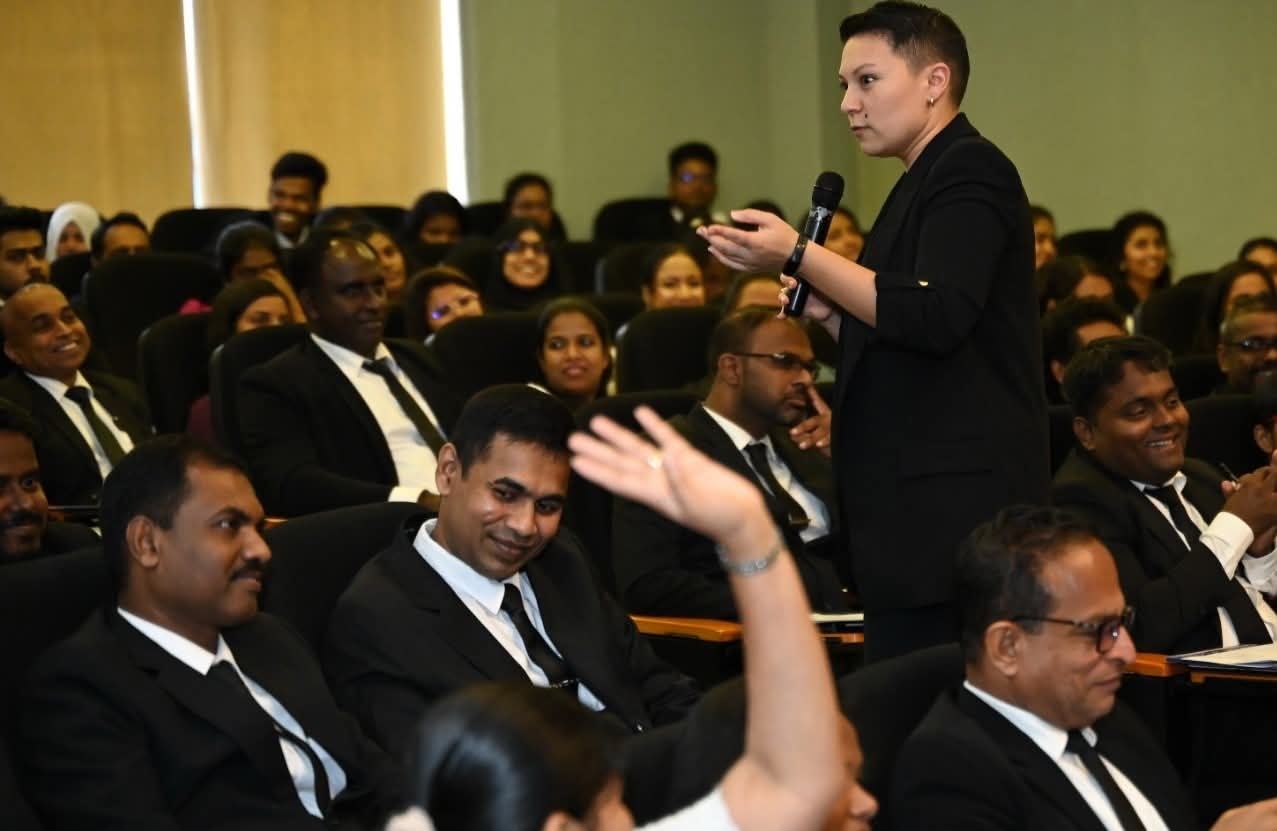Commanding Respect, Not Fear: The Modern Leader’s Approach to Team Management

Influence, vision and the capacity to lead a group of people toward shared objectives are more important components of effective leadership than titles or power. Successful leaders in today’s fast paced workplaces need to inspire, encourage and gain the trust of their staff in addition to managing performance. Team morale, output and the organization’s overall success are all directly impacted by a leader’s behavior. This article examines how a leader should act professionally, show empathy and have strategic vision when managing a team.
1. Lead by Example
Setting a good example is the foundation of leadership. A team frequently imitates the actions of its leader. The team is likely to exhibit commitment, accountability, timeliness and integrity if the leader exhibits these traits. Setting a good example gains credibility and respect. It conveys that everyone is subject to the same standards, including the person in charge. There is a disconnect, for example, if a boss expects staff to meet deadlines but routinely misses their own. Conversely, leaders who lead by example set the standard for a consistent and professional culture.
2. Communicate Clearly and Effectively
In order to align the team, communication is essential. A competent leader clearly states objectives, responsibilities and expectations. Beyond directives, two way communication is essential. Leaders need to actively and impartially listen to their staff. Employees gain a sense of value and belonging as well as trust as a result. Clear communication also aids in conflict resolution, change management and miscommunication prevention. Leaders should make sure that every interaction, whether it be in writing, team meetings or one on one conversations is clear, empathetic and purposeful.
3. Set Clear Goals and Expectations
A high achieving team requires guidance. Setting SMART goals Specific, Measurable, Achievable, Relevant and Time bound is part of a leader’s job description. Everyone stays focused when there is clarity about what needs to be done, who is in charge and how success is determined.
4. Practice Emotional Intelligence
An essential leadership ability is the ability to understand one’s own emotions as well as those of others. Leaders with emotional intelligence (EQ) are able to empathize, carefully manage relationships with others and remain composed under pressure. High EQ leaders are able to resolve disputes, understand team dynamics and offer assistance when required. Leaders who are approachable and emotionally intelligent encourage a safe environment where staff members can express their worries, exchange ideas and ask for assistance without worrying about criticism or repercussions.
5. Empower and Delegate
Micromanagement reduces trust and hampers creativity. Proficient leaders understand when to take rest and allow their team to take charge. The goal of delegation is to entrust responsibility with the appropriate assistance, not to dump work on others. Employee empowerment means providing them with the resources, instructions and freedom to decide for themselves. This increases self assurance, encourages creativity and advances team development. Additionally, it enables leaders to avoid getting involved in operational details and instead concentrate on strategic priorities.
6. Provide Constructive Feedback
Feedback, not criticism is a tool for development. Giving constructive criticism enables staff members to recognize their strengths and areas for development. Feedback should be given by leaders on a regular basis, not only at yearly reviews. Pay attention to behaviors rather than personalities when providing feedback. Be objective, give specific examples and follow up with recommendations that can be put into practice. Rewarding performance should also never be undervalued because it raises motivation and morale when good work is acknowledged.
7. Maintain Discipline with Fairness
Maintaining professionalism and consistency in the workplace requires discipline. However, it needs to be treated fairly and unbiased. Regardless of biases or personal relationships, a leader must consistently enforce rules and policies. When a problem occurs, it should be resolved quickly and carefully. Leaders should pay attention to the facts, hear all viewpoints and act appropriately in accordance with company policies. Favoritism or inconsistency compromises unity among teammates, whereas fairness builds respect.
8. Encourage Collaboration and Teamwork
Collaboration is essential to a successful team. Leaders need to create an atmosphere where sharing knowledge is accepted and teamwork is valued. Team ties are strengthened through group project assignment, team building exercises and cultivating an environment of respect for one another. More creative and comprehensive solutions are also a result of valuing and promoting diversity of opinion. Conflicts resulting from differences must be handled effectively by leaders in order to keep the group solid and working toward shared objectives.
9. Adapt to Change and Drive Innovation
The workplace of today is always changing. A strong leader needs to be flexible and open to new ideas. This involves implementing new technology, adjusting to remote or hybrid work arrangements and consistently upgrading procedures. Furthermore by promoting originality and unconventional thinking, leaders should not only adapt but also inspire innovation. Leaders may maximize the potential of their team by developing an environment where failures are viewed as teaching moments and experimentation is encouraged.
10. Invest in Team Development
A great leader is dedicated to their team’s development. Providing career development opportunities, mentorship and training shows a sustained commitment to staff members. Individual strengths and areas for development should be recognized by leaders, who should then match them with the objectives of the team and the company. To develop talent, conduct regular performance reviews, skill building workshops and knowledge sharing sessions. Employees are more likely to remain engaged and loyal when they believe their growth is valued.
Conclusion
There is no standard approach that works for leadership. It calls for an integration of discipline, strategy, empathy and vision. Even in the face of difficulties, leaders can lead their teams to success by acting honorably, communicating clearly and giving others authority. Respect for the process, the people and the mission is the foundation of great leadership. A team that not only performs well but develops is the outcome of a leader who places a high priority on trust, equity and growth. The ability of a leader to inspire not to command, but to connect is ultimately what determines the conduct and authority of a team.
Lasal Jayatillake EMSc (D.Mktg), DipM, ACPM, MCIM, MSLIM, Chartered Marketer, Practicing Marketer (SL)
Related News
Step Into Your Global Career: Australasian Academy Open Day on 20th December 2025
For students completing O/Ls and A/Ls, that opportunity comes on Saturday, 20th December 2025, when Australasian Academy opens its doors for an…
Read MoreCelebrating 250 Years of Jane Austen
Jane Austen's wit, romance and sharp social satire have shaped the world of literature for generations and the celebration of her 250th…
Read MoreSchools instructed to cancel third-term exams for Grades 6 –10
The Ministry of Education has announced that term examinations will not be held for Grades 6 to 10 during the third school…
Read MoreSubject Content Released for Pending Sections of 2025 GCE Advanced Level Examination
The Ministry of Education has made available the subject content for sections of the 2025 GCE Advanced Level (A/L) Examination that are…
Read MoreNSBM Green University Hosts Nepalese Ambassador to Strengthen Higher Education Ties
NSBM Green University welcomed His Excellency Dr. Purna Bahadur Nepali, Ambassador of Nepal to Sri Lanka, for a cordial and meaningful visit…
Read MoreCourses
-

MBA in Project Management & Artificial Intelligence – Oxford College of Business
In an era defined by rapid technological change, organizations increasingly demand leaders who not only understand traditional project management, but can also… -

Scholarships for 2025 Postgraduate Diploma in Education for SLEAS and SLTES Officers
The Ministry of Education, Higher Education and Vocational Education has announced the granting of full scholarships for the one-year weekend Postgraduate Diploma… -

Shape Your Future with a BSc in Business Management (HRM) at Horizon Campus
Human Resource Management is more than a career. It’s about growing people, building organizational culture, and leading with purpose. Every impactful journey… -

ESOFT UNI Signs MoU with Box Gill Institute, Australia
ESOFt UNI recently hosted a formal Memorandum of Understanding (MoU) signing ceremony with Box Hill Institute, Australia, signaling a significant step in… -

Ace Your University Interview in Sri Lanka: A Guide with Examples
Getting into a Sri Lankan sate or non-state university is not just about the scores. For some universities' programmes, your personality, communication… -

MCW Global Young Leaders Fellowship 2026
MCW Global (Miracle Corners of the World) runs a Young Leaders Fellowship, a year-long leadership program for young people (18–26) around the… -

Enhance Your Arabic Skills with the Intermediate Language Course at BCIS
BCIS invites learners to join its Intermediate Arabic Language Course this November and further develop both linguistic skills and cultural understanding. Designed… -

Achieve Your American Dream : NCHS Spring Intake Webinar
NCHS is paving the way for Sri Lankan students to achieve their American Dream. As Sri Lanka’s leading pathway provider to the… -

National Diploma in Teaching course : Notice
A Gazette notice has been released recently, concerning the enrollment of aspiring teachers into National Colleges of Education for the three-year pre-service… -

IMC Education Features Largest Student Recruitment for QIU’s October 2025 Intake
Quest International University (QIU), Malaysia recently hosted a pre-departure briefing and high tea at the Shangri-La Hotel in Colombo for its incoming… -

Global University Employability Ranking according to Times Higher Education
Attending college or university offers more than just career preparation, though selecting the right school and program can significantly enhance your job… -

Diploma in Occupational Safety & Health (DOSH) – CIPM
The Chartered Institute of Personnel Management (CIPM) is proud to announce the launch of its Diploma in Occupational Safety & Health (DOSH),… -

Small Grant Scheme for Australia Awards Alumni Sri Lanka
Australia Awards alumni are warmly invited to apply for a grant up to AUD 5,000 to support an innovative project that aim… -

PIM Launches Special Programme for Newly Promoted SriLankan Airlines Managers
The Postgraduate Institute of Management (PIM) has launched a dedicated Newly Promoted Manager Programme designed to strengthen the leadership and management capabilities… -

IMC – Bachelor of Psychology
IMC Education Overview IMC Campus in partnership with Lincoln University College (LUC) Malaysia offers Bachelor of Psychology Degree right here in Sri…
Newswire
-

WATCH : Quick action averts disaster at Ja-Ela railway crossing
ON: December 19, 2025 -

Ranwala clears alcohol test – Police
ON: December 19, 2025 -

Over 500 Sri Lankan lawyers trained under US justice program
ON: December 19, 2025 -

Prime Group Stands with the Children of Police Families Affected by Cyclone Ditwah
ON: December 19, 2025 -

Rs. 500 billion Supplementary Estimate approved in Parliament
ON: December 19, 2025









